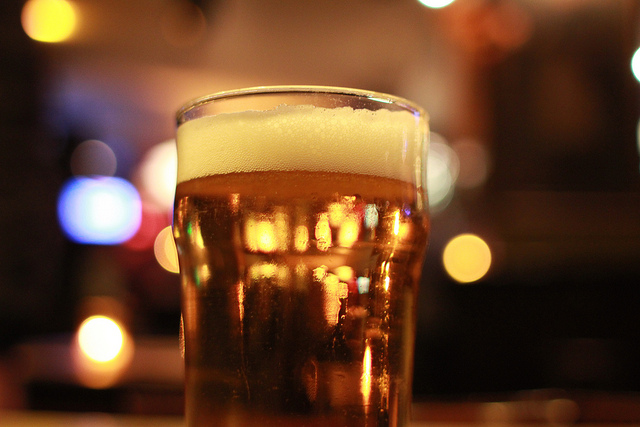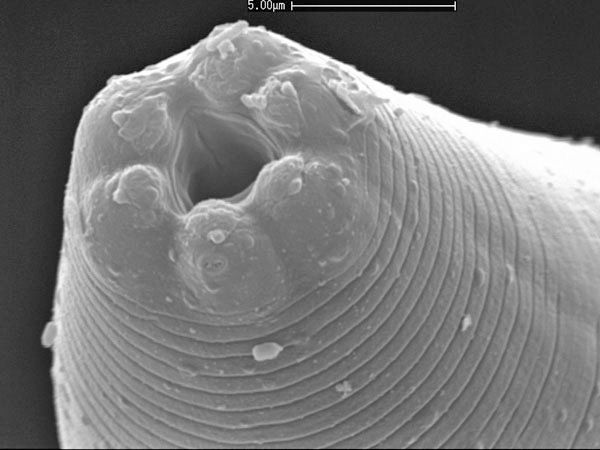
Image: Flickr / HeadCRasher
By Luisa Volpato
Many of you may enjoy a cold one on Australia Day, but as you sip that schooner spare a thought for the science behind the taste of your favourite beer.
The Food Futures Flagship’s work in the area of quality biosensors draws on research into the smell and taste receptors of microscopic worms and bacteria and how they so accurately detect different chemicals.

Scanning electron micrograph of a nematode worm’s head. Researchers are using the smell and taste receptors of nematode worms and bacteria to develop better performing sensor technology. Image: Dr. Julie-Anne Fritz.
Inspired by nature and a result of years of pioneering research, a bio-electronic nose, or CYBERNOSE instrument, has been developed to help detect and measure odours and chemicals in a whole range of substances, including food and drinks.
To give you an idea of how sensitive it is, it can detect one drop of a particular chemical in a body of water equal to 20,000 Olympic-sized swimming pools.
In the case of beer, a maltose biosensor has been created that measures the concentration of maltose, or malt sugar, in beer during the fermentation process, which is what contributes to the taste, quality and body of the beer. It’s more sensitive, quicker and cheaper than testing methods currently available.
Besides beer, maltose is found in other beverages, cereal, pasta, and in many processed products which have been sweetened.
While better tasting beer is not the aim of our research, the good news about this biosensor in maltose is that it’s a good example that can be adapted to a range of other uses across the food supply chain.
That’s because the maltose binding protein used in the biosensor is similar to other binding proteins, which can be used to detect levels of such things as carbohydrates and amino acids in foods.
So for example, a similar tool might help measure lactose in a food or beverage so manufacturers can adapt their products to make them suitable for people who are lactose intolerant.
Similarly, it could be used to check food safety and quality by detecting toxins or contaminants.
In the same way, this technology can be adapted to detect a wide range of soluble or volatile chemicals, potentially leading to these super sensitive smelling devices being used for medical diagnostics, environmental monitoring, pest control and protecting Australia’s security and biosecurity.
Who knows, the sniffer dogs at the airport might one day be out of a job.

